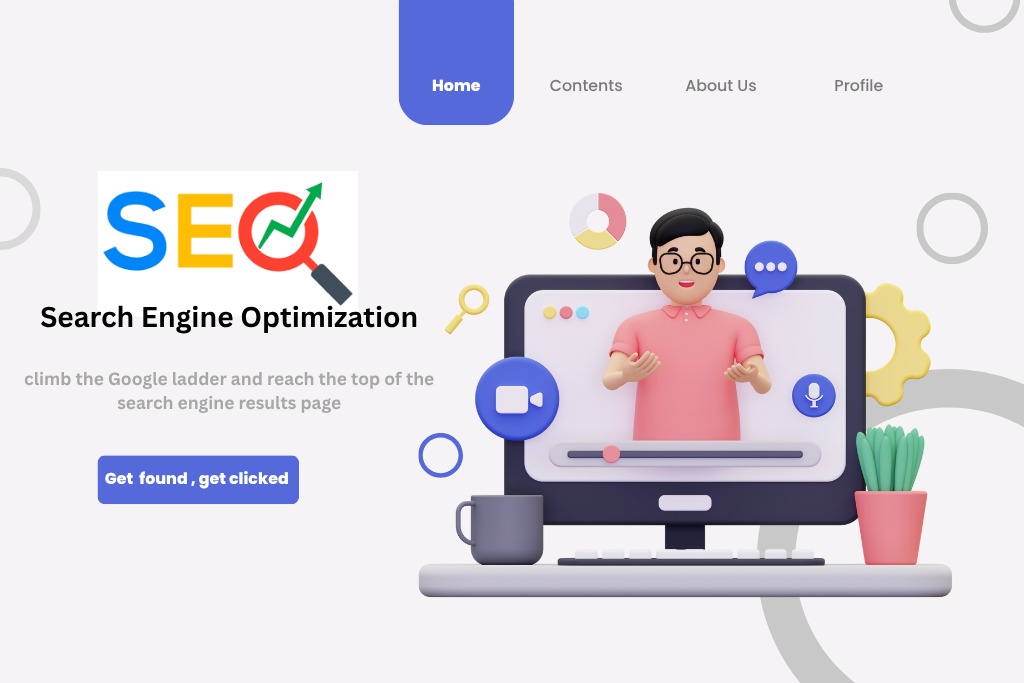Climb the Google Ladder: SEO for beginners

In today’s digital world, simply having a website isn’t enough. If your content isn’t visible to your audience, you’re missing out on valuable traffic, engagement, and sales. That’s where SEO, or Search Engine Optimization, steps in. In this SEO for beginners guide, we’ll walk you through the basics of SEO, how it works, and how you can use it to climb the Google ladder and reach the top of the search engine results page (SERP).
How to Climb the Google Ladder: Step-by-Step Guide for SEO Beginners
Step 1: Start with a Website Audit
Use tools like Screaming Frog or SEMrush to identify and fix broken links, duplicate content, or missing meta tags.
Step 2: Perform Keyword Research
Identify keywords with high search volume and low competition. Aim for both short and long-tail keywords.
Step 3: Optimize Your Pages
Apply on-page SEO tactics. Make sure your content is well-structured, visually appealing, and keyword-rich.
Step 4: Improve Page Speed
Compress images, use a CDN, and remove unnecessary plugins or scripts.
Step 5: Focus on User Experience
Make navigation easy, use clear CTAs (calls to action), and design a mobile-friendly layout.
Step 6: Build Quality Backlink
Reach out to bloggers, influencers, or industry leaders. Use strategies like broken link building or expert roundups.
Step 7: Track & Analyze Performance
Use Google Analytics and Google Search Console to monitor rankings, CTR, and bounce rate. Adjust your strategy based on data.
What is SEO?
SEO (Search Engine Optimization) is the process of optimizing your website to increase its visibility on search engines like Google, Bing, and Yahoo. The goal is to improve organic (non-paid) traffic by making your site more relevant and authoritative for search queries related to your content.
When users search for something online, search engines use algorithms to determine which websites appear first. By aligning your website with SEO best practices, you can help search engines understand and rank your content higher.
Why is SEO Important?
- Increased Visibility: Higher search rankings lead to more impressions and clicks.
- Cost-Effective: Unlike paid advertising, organic SEO continues to drive traffic long after it’s implemented.
- Credibility and Trust: Websites that appear on the first page are often perceived as more trustworthy.
- Better User Experience: Good SEO improves site speed, mobile-friendliness, and usability.
- Long-Term Results: SEO brings sustainable traffic when done consistently.
Key Components of SEO for beginners
-
Keyword Research
Keyword research is the foundation of SEO. It involves finding the exact terms your target audience is searching for.
Tips:
- Use tools like Google Keyword Planner, Ahrefs, or Ubersuggest.
- Focus on long-tail keywords (e.g., “how to start a blog in 2025”).
- Analyze competitors to discover keyword gaps.
Targeting Keywords to Use:
- Beginner’s SEO guide
- What is SEO
- SEO basics
- Google ranking tips
- How to rank higher on Google
- Climb the Google ladder
-
On-Page SEO
On-page SEO involves optimizing individual pages to rank higher and earn more relevant traffic.
Important Elements:
- Title Tags: Include your main keyword.
- Meta Descriptions: Write compelling summaries with keywords.
- Headers (H1, H2, H3): Organize content and insert keywords naturally.
- URL Structure: Keep URLs short, relevant, and keyword-rich.
- Content Optimization: Use target keywords naturally throughout the text.
- Image SEO: Add alt text with relevant keywords.
-
Technical SEO
Technical SEO ensures that your website meets the technical requirements of modern search engines.
Checklist:
- Mobile responsiveness
- Fast loading speed (use Google PageSpeed Insights)
- SSL certificate (HTTPS)
- XML sitemap submission
- Clean and crawlable site structure
-
Off-Page SEO
Off-page SEO refers to actions taken outside of your website to improve its authority and ranking.
Key Tactics:
- Backlinks: Acquire links from reputable sites in your niche.
- Social Sharing: Promote content on social media.
- Guest Posting: Write articles for related blogs and link back to your site.
- Brand Mentions: Build online presence through partnerships and mentions.
-
Content Marketing
Content is the fuel that powers your SEO engine. High-quality content attracts users and earns backlinks.
Best Practices:
- Create in-depth, valuable, and original content.
- Use a mix of text, images, and videos.
- Update old content regularly.
- Focus on E-E-A-T: Expertise, Experience, Authoritativeness, Trustworthiness.
Common SEO Mistakes to Avoid
- Keyword stuffing
- Ignoring mobile optimization
- Using duplicate content
- Neglecting meta descriptions
- Failing to update outdated content
Tools Every SEO Beginner Should Use
- Google Search Console – Monitor site performance and indexing.
- Google Analytics – Track user behavior and traffic sources.
- Yoast SEO (for WordPress) – Optimize on-page elements.
- Ahrefs/Ubersuggest – Conduct keyword and backlink research.
- GTmetrix – Test and improve site speed.
Conclusion
Climbing the Google ladder doesn’t happen overnight, but with consistent effort, the results are worth it. SEO is a marathon, not a sprint but even beginners can see progress quickly with the right approach.
Remember:
- Focus on quality content
- Understand your audience’s intent
- Build trust and authority
- Stay updated with SEO trends and algorithm changes
By following this beginners SEO guide, you’re not just optimizing for search engines you’re creating a better, faster, and more useful experience for your visitors. So start today, and step by step, watch your website climb the Google ladder.
